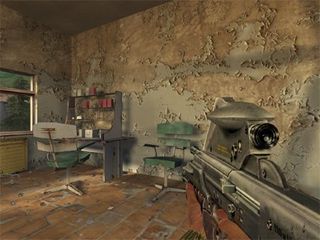GeForceFX: NVIDIA goes Hollywood?
Conclusion And Performance Analysis

So, now let's finally get back to answering our opening question. How does the new GeForceFX stack up against the Radeon 9700 PRO alias R300? On paper NVIDIA has regained technological superiority over its rival ATi, easily eclipsing the R300. The extended vertex and pixel shader capabilities, which go far beyond the DirectX 9 specification, will enable game developers to create and employ much more complex effects in real-time than the R300 could. On top of that, NVIDIA is supplying them with the necessary tool, in the form of the Cg compiler. However, it remains to be seen to what extent developers will embrace these new possibilities and make use of the new features.
Enthusiasts and gamers alike have become accustomed to a development cycle which brings them new products with supposedly breathtaking features that don't see any use for at least a year after their introduction. This is exactly where Cg fits in - it is supposed to pave the way for developers to easily create new shaders which can be executed on a broad installation base of existing hardware as well as new products. This way, early adopters will still benefit from their investment without the majority of users being handicapped by too-specialized software. In the end, game publishing companies care only about one thing: the bottom line. Obviously, this is achieved by selling games - lots of them. Whether or not the buyers use the shaders doesn't matter too much to them.

Games like Stalker show the future See more (outdoor) screenshots here:http://www.stalker-game.com/index_eng.html
NVIDIA's main problem is that not even the basic functions of DirectX 9 can be used today. The only DirectX 9 version currently available is a public beta version, and games are even further off in a rather distant future. This constellation will make it hard to sell new products based on the (future) importance of their new features alone. This is exactly the Radeon 9700 PRO's strong suit: it combined the theoretical benefit of DX9 support with superior gaming performance in today's games. The Radeon achieves this through its high memory bandwidth, the high triangle throughput of its vertex shaders, and its extremely fast pixel pipelines. When antialiasing and anisotropic filtering are used in combination, the R300 cuts an especially imposing figure and simply dominates everything available in the market today.
Stay on the Cutting Edge
Join the experts who read Tom's Hardware for the inside track on enthusiast PC tech news — and have for over 25 years. We'll send breaking news and in-depth reviews of CPUs, GPUs, AI, maker hardware and more straight to your inbox.
Current page: Conclusion And Performance Analysis
Prev Page Flow Control Next Page Conclusion And Performance Analysis, ContinuedMost Popular

